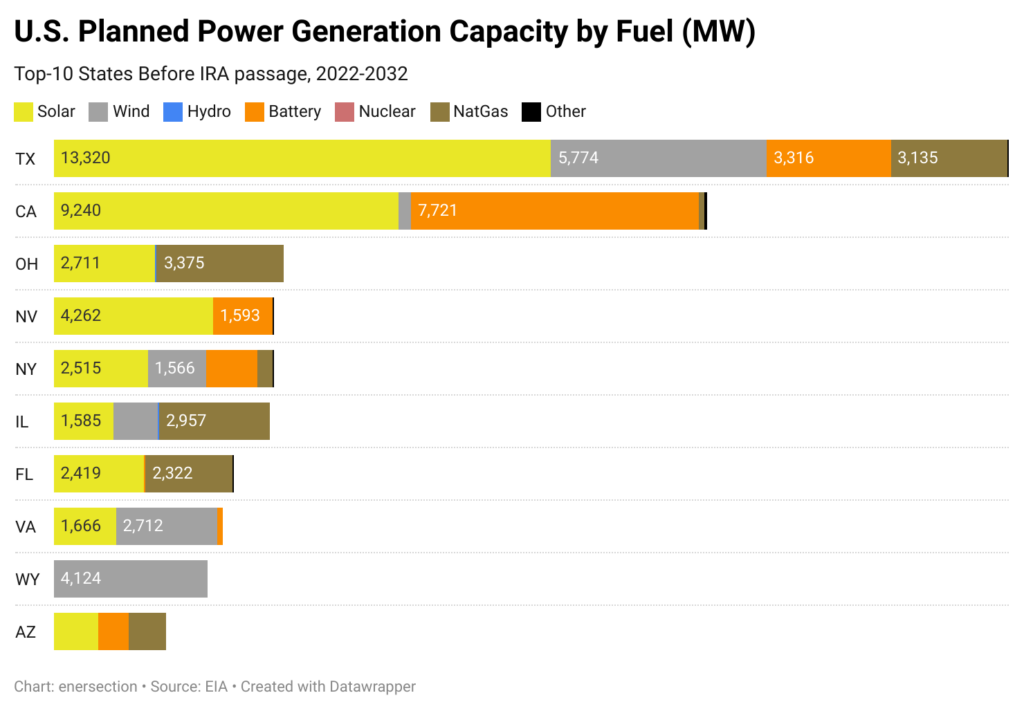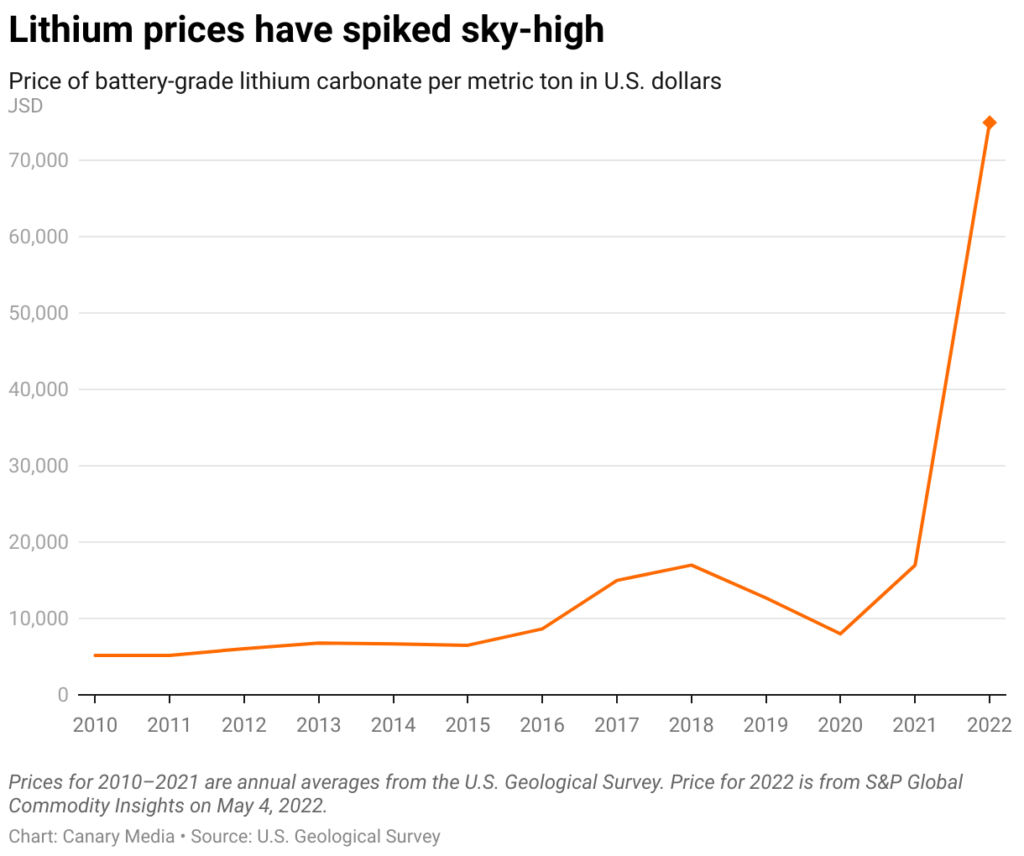04 September 2022 | Climate Tech
Better batteries
By
Batteries aren’t just important for EVs. They’re becoming a more critical part of energy storage at larger scales, e.g., for renewable power producers and grids worldwide. The intermittency of certain renewables, like wind power, makes energy storage important. Not just because they can’t always provide power, but because there isn’t enough demand for their capacity at other times.
There are many other energy storage systems beyond batteries. Most utility-scale energy storage in the U.S. is pumped hydro, which isn’t exactly novel tech. Still, batteries are making inroads as a form of energy backup and support for grids worldwide. For instance, in California, batteries are a primary component of planned capacity expansion alongside solar (note, the below chart comes from before California passed massive climate legislation last week):

Two deals this week highlight different areas of the battery technology ‘story’:
- Ascend Elements raised $50M for its lithium-ion battery recycling process
- Elestor raised $30M for its flow batteries
Recycling is a critical component of the battery value chain because of how ‘tight’ supply chains are for crucial battery materials. As we’ve covered previously, discussing the scarcity of key inputs for batteries, as well as the environmental impact of their extraction, is an essential calling card for fossil fuel proponents and the anti-climate tech lobby. Most arguments, however, betray a lack of appreciation for advancements in battery recycling. For instance, CATL, one of the largest energy storage companies in the world, cited recovery rates of 99%+ for nickel and manganese and 90% for lithium in recent updates on its business.
Ascend Elements wants to get in on that lithium recycling action. Using a patented process, they cite a recovery rate of ‘up’ to 98%, a step up from CATL, but also likely confined to a more narrow range of battery types they can process. Still, as lithium prices have climbed massively this year, there’s plenty of room for a host of players in this space to grow.

Elestor meanwhile is innovating a new type of battery that will be critical if batteries play a more significant role in utility-scale energy storage. The lithium-ion batteries Ascend Elements wants to help recycle don’t lend themselves all that well to larger-scale applications; they can degrade relatively quickly at a utility scale.
Flow batteries, meanwhile, flow two different chemicals between different tanks within a cell to produce a chemical reaction. The ability to reverse the reaction allows electricity to be stored or discharged. The hope is that these batteries will decay less quickly at scale, feature higher energy density, and, in line with the above conversations on price and recovery value, use lower-cost materials.
Elestor’s flow battery specifically uses hydrogen and bromine, which are lower-cost materials, especially compared to lithium or other expensive metals. Previously, flow batteries themselves frequently utilized the rare earth metal vanadium; moving them beyond that point is a core, recent innovation. The battery also produces hydrogen during charging, meaning it could integrate with other hydrogen infrastructure.
The net-net
As always, the proof will have to be in the pudding. Elestor plans to build storage projects in Australia but hasn’t officially announced any. And while it’s making a massive (and domestic!) investment in a plant to scale its capacity to recycle lithium-ion batteries, Ascend Elements won’t begin operating it until the end of 2023. That’s one important thing to keep in mind regarding financing rounds we cover in these emails on Sunday: They’re just a catalyst for the more difficult and more crucial work of executing and expanding.
Keeping up with everything happening in batteries alone could be an excellent newsletter. Arguments about why there aren’t enough metals in the world for future battery needs or why batteries aren’t efficient enough to serve as energy storage make the mistake of extending the current state of battery tech into the future. Really, countless companies are working on every piece of the battery value chain and different battery types every day.